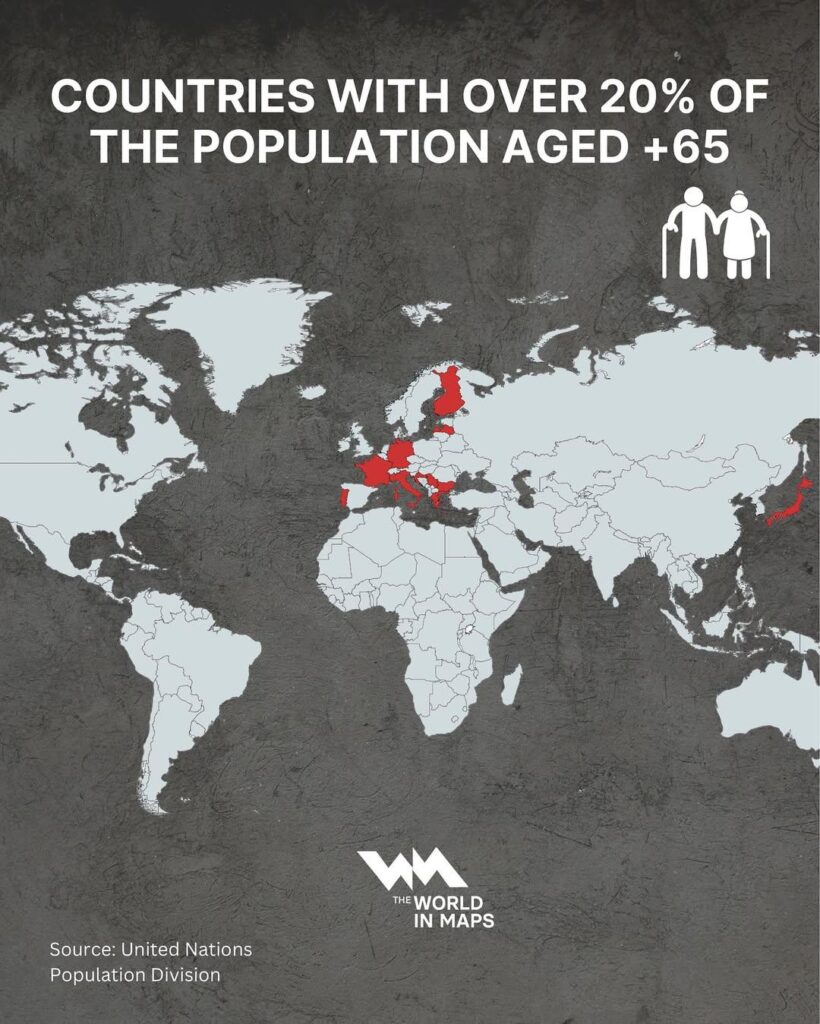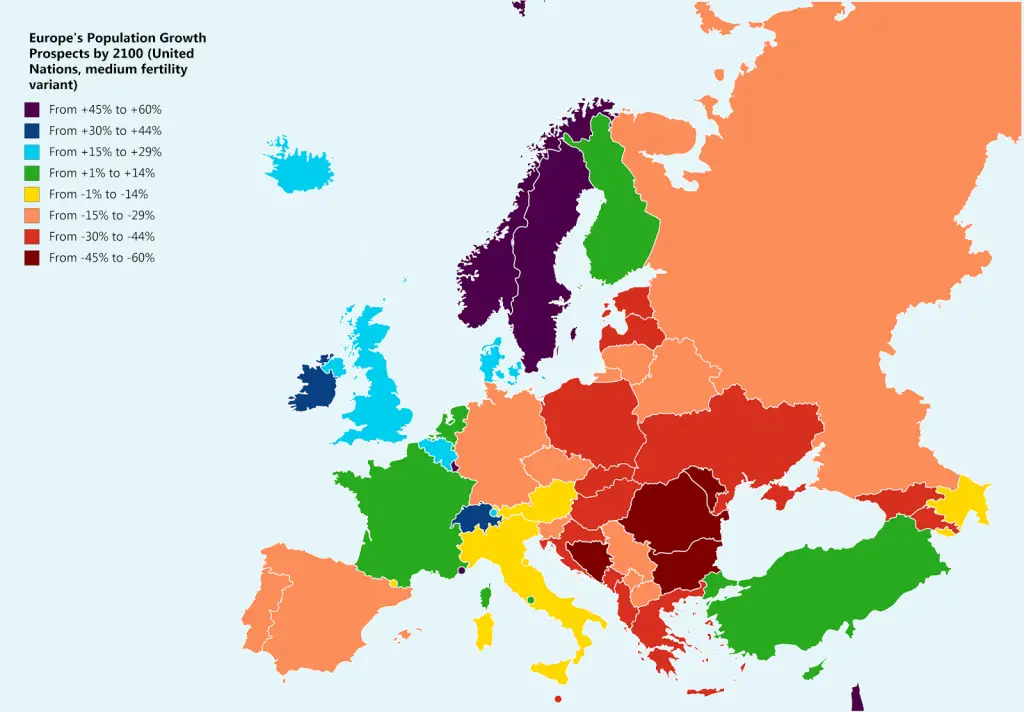The World Is Aging: Which Countries Have Over 20% of People Aged 65+?
Aging populations are reshaping economies, healthcare systems, and family structures across the globe. The map below – based on UN Population Division data and published by “The World in Maps” – shows where more than 20 % of the population is already aged 65 and older.

Key takeaways:
- As of 2024–2025, Japan leads the list with nearly 30 % aged 65+.
- Several European countries: Italy, Greece, Finland, Portugal, Germany, Bulgaria, France, Croatia, Latvia, Netherlands, and Serbia also cross the 20 % threshold.
- These countries face similar demographic pressures: very low birth rates and longer lifespans.
Population over 65 in 2024
| Country | Total Population (2024 est.) | Population 65+ | % Aged 65+ |
|---|---|---|---|
| Japan | ~123 million | ~36 million | ~29.3 % |
| Italy | ~60 million | ~13.9 million | ~23.2 % |
| Finland | ~5.6 million | ~1.23 million | ~22.3 % |
| Greece | ~10.7 million | ~2.33 million | ~21.8 % |
| Portugal | ~10.3 million | ~2.25 million | ~22.1 % |
| Germany | ~83 million | ~18.1 million | ~21.8 % |
| Bulgaria | ~7.0 million | ~1.5 million | ~21.6 % |
| France | ~65 million | ~13.8 million | ~21.3 % |
| Croatia | ~4.0 million | ~0.82 million | ~20.4 % |
| Latvia | ~1.9 million | ~0.41 million | ~21.2 % |
| Netherlands | ~17.5 million | ~3.5 million | ~20.2 % |
| Serbia | ~6.6 million | ~1.35 million | ~20.5 % |
Why are these countries aging so fast?
Here’s what’s typically happening in these high‑aged societies:
- Birth rates well below replacement level (often around 1.2–1.5 children per woman), meaning fewer young people entering the population (South Korea holds the record with only 0.7 kids per woman!).
- Increasing longevity, thanks to better healthcare and nutrition, so more people reach their 80s and 90s.
Japan is a clear example: its fertility rate sits near 1.2, combined with the world’s highest median age (~48.4 years), and an aging share of nearly 30 % as of 2025.
European countries like Italy, Finland, and Greece mirror that long‑term decline in births and rise in life expectancy.
Who’s next—and what does the future hold?
Countries close to the threshold in the early 2020s—including South Korea (≈17–18 %), UK (~18 %), Canada (~17 %), Spain (~19 %), Sweden, Austria, Belgium, and Czechia—are expected to pass 20 % in the 2030s or early 2040s.
Globally, the UN forecasts that the share of people aged 65+ will rise from about 10 % today to over 20 % by 2050. Many more countries will join the “20 % club” in the coming two decades.
The IMF keeps warning about economic slowdown from aging populations, especially when labor markets can’t keep up. More retirees and fewer workers? Pensions get squeezed and healthcare bills pile up.
But aging isn’t all doom and gloom. Some countries find ways to keep older people involved – working part-time, volunteering, helping with childcare. Demographers have a term for this: “second demographic dividend.”
How are countries responding?
Governments aren’t just waiting around. Some responses include:
- Gradual retirement age increases – makes sense when people live longer.
- Better part-time and flexible work options for older employees.
- Investing in eldercare: home help, assisted living, and better healthcare services.
- Boosting immigration to maintain a stable working-age population.
Offering child support benefits and tax breaks to raise birth rates, though these often have limited results.
In France, where over 21 % of the population is already aged 65+, the government has increased the retirement age and plans to adjust its pension system. Italy and Germany are exploring similar reforms and expanding vocational retraining for older workers.








